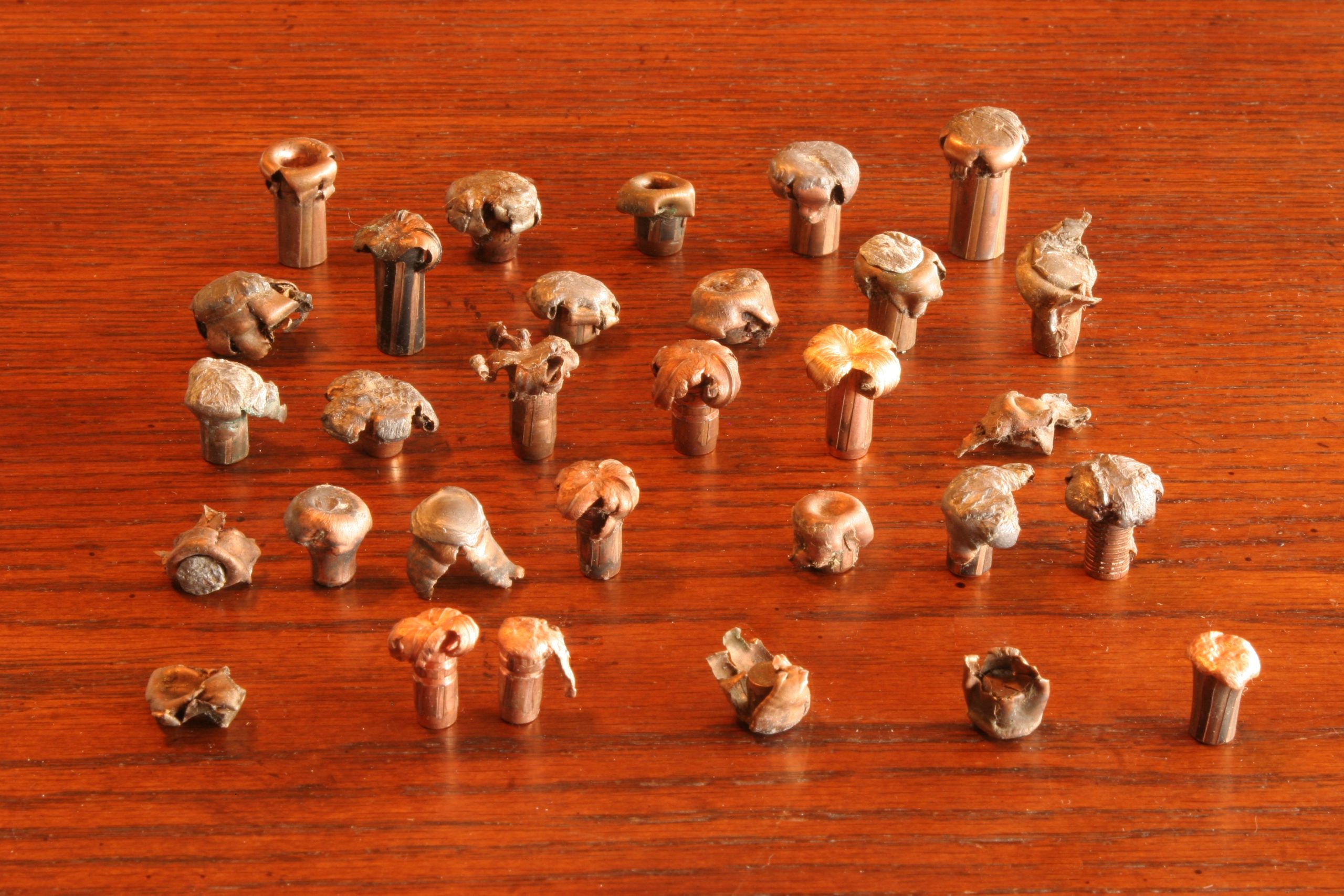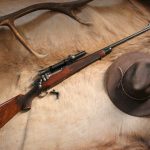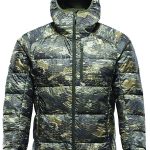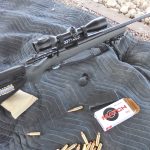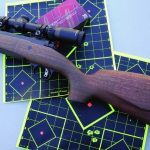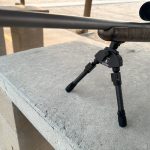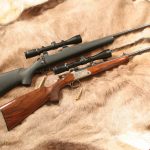From patched round balls to today’s high-tech monolithics, bullets have evolved to be faster, stronger, and more efficient.
Rifled barrels first appeared in what is now Germany about five centuries ago. At first the grooves were straight, evidently designed as somewhere for blackpowder fouling to go when pushing bullets into the barrels of fired muzzleloaders, making it possible to load and fire more bullets between cleanings. However, the grooves actually made thorough cleaning more difficult, one reason some hunters and many armies stayed with smoothbores into the early nineteenth century.
Soon, however, it was discovered that spiral rifling resulted in finer accuracy. This occurs due to the gyroscopic stability imparted by rifling, which spins even a round ball on an axis parallel to the bore. A smoothbore barrel also tends to impart some spin, but usually sideways, resulting in a flight resembling a major league curveball. (If by some fluke a round ball doesn’t spin, it flies erratically like a knuckleball.)
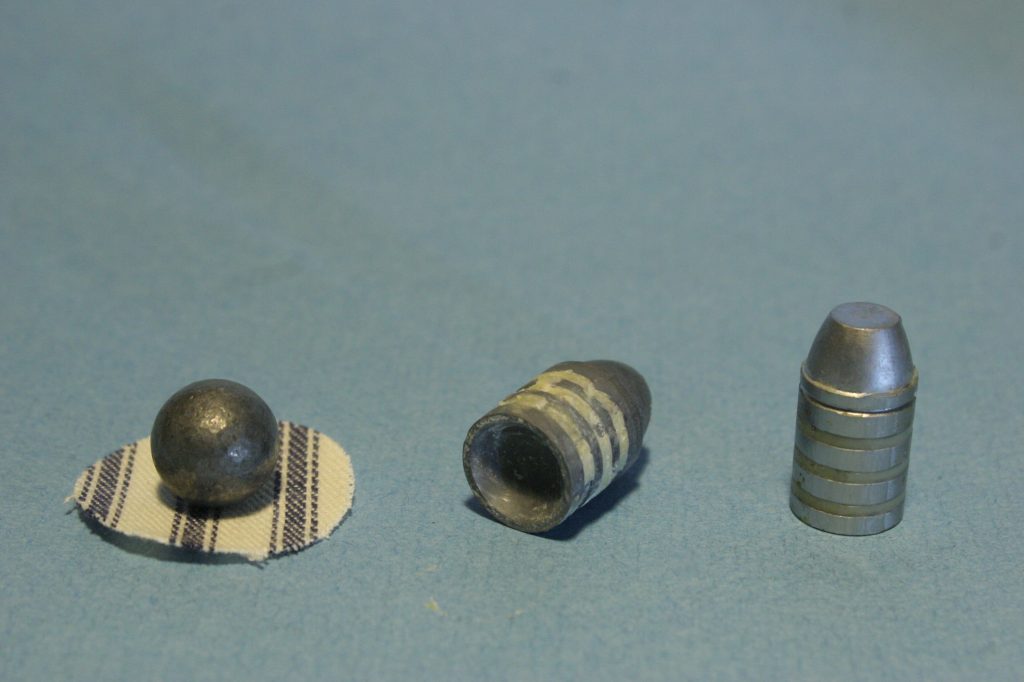
For several centuries, bullets for shoulder-fired muskets and rifles were almost all made of lead, for several reasons. Lead’s relatively heavy weight helps even ballistically inefficient round balls retain velocity and penetrate pretty well. Its abundance, softness, and low melting temperature also historically made lead affordable, since it could be mined and shaped far more easily than other metals.
In fact, lead was among the most important metals utilized in the development of what humans term civilization, since it not only could be easily formed into bullets but also a wide variety of complex shapes, including containers and pipes for various kinds of liquids, and eventually even type for printing type. (The first two amendments to the U.S. Constitution, freedom of speech and the press, and the right to bear arms, both involved the practical use of lead.)
Toward the middle of the nineteenth century, a succession of French inventors began making improvements to muzzleloading rifles and projectiles. A new rifle developed in 1826 by Henri-Gustave Delvigne, a French soldier/inventor, incorporated a smaller-diameter “powder chamber” in the rear of the rifled barrel, with the front of the chamber rounded to match the contour of a lead ball just slightly smaller than the bore. When ramrodded against this radius, the ball expanded to fit the rifling.
Eventually Delvigne and others improved upon this, designing elongated bullets that retained more velocity during flight due to their improved sectional density—more weight behind the frontal surface of the bullet. This eventually resulted in the famous Minié ball, developed in 1846 by Claude-Étienne Minié, another French officer. The conical bullet featured lubrication grooves and a cavity in the rear that expanded upon firing.
During this same period, advances were also made in breech-loading rifles with self-contained, metallic cartridges. The first, a tiny rimfire round powered only by the priming compound, was patented in 1845 by another Frenchman, Louis-Nicolas Flobert. (Though named the 6mm Flobert, this was only an approximation of the bullet’s actual .222-inch diameter. It’s still produced today, and in America it is called the .22 BB Cap.) In 1857 Smith & Wesson introduced an elongated version, known today as the .22 Short, which included a pinch of black powder, and evolved into 1888’s .22 Long Rifle.
The first metallic cartridge rifles suitable for big game were chambered for larger rimfire rounds, but the thin rim couldn’t handle much pressure. The solution was centerfire cases, with a small primer surrounded by a much thicker case-head. By the 1860s the centerfire system resulted in far more effective big-game cartridges. Bullets didn’t need to be loaded from the muzzle, so they could be the same diameter as the rifling—and much longer and heavier, increasing both range and penetration.
Many of the world’s armies didn’t take full advantage of this, due to a historical fear of soldiers “wasting” too much ammunition, so they used single-shot rather than repeating rifles. Hunters, however, really liked being able to shoot more than once without reloading, and by the 1870s, larger, more powerful cartridges firing heavier bullets started appearing in repeaters and double-barreled rifles.
Some, of course, were military rounds such as the .45-70 Springfield, or improvements on the same basic case, whether necked down to around .40 caliber, improving sectional density, or simply elongated to provide more velocity to the same bullets. The .45-90 Winchester Center Fire, for example, is essentially a longer version of the .45-70. British cartridges included traditional heavy-bullet rounds, but some featured lighter bullets that approached 2,000 fps in muzzle velocity, flattening initial trajectory.
At that point, hunting bullet performance started to resemble that of modern bullets used today. Velocities and penetration increased, and terminal performance could be manipulated by changes in bullet shape, or alloying lead with other metals to harden it, increasing penetration on larger game.
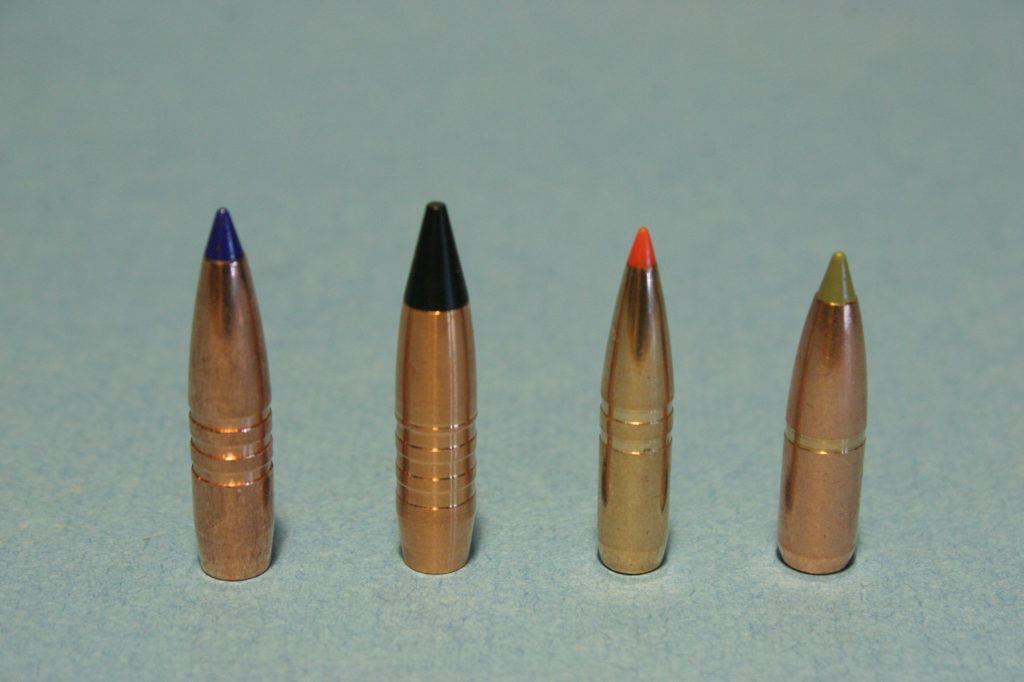
Hunters discovered that a hard-lead, flat-tipped bullet tended to kill quicker than a round-nose bullet. This is partly due to a phenomenon called cavitation, which forms a temporary “vapor pocket” in front of the bullet in liquids—including the liquids in the vital organs of big game. This vapor pocket results in more damage to surrounding tissue, and while all bullets result in some cavitation, flat-nose bullets create more.
Softer lead bullets often expanded when they hit game. This reduced penetration, but increased both the bullet’s diameter and cavitation, resulting in the development of hollow-point bullets for hunting both small and medium-sized game.
In historical terms this era didn’t last long, due to the appearance of practical smokeless rifle powders in the 1880s. Smokeless powders suitable for handgun and shotgun ammunition had been developed by the 1850s, but they burned too fast for rifle use. Eventually chemists developed various methods to slow the burn rate, allowing smokeless cartridges to push bullets to muzzle velocities over 2,000 fps.
This was too fast for even the hardest lead alloys, resulting in heavy lead fouling in the bore, which was far more difficult to remove than black powder fouling. The solution was jacketed bullets, with a lead core inserted into a relatively thin cup of harder metal, sometimes steel but more often a variety of copper alloy. The jacket and core were then swaged together into the bullet’s final shape, holding the lead core in place—at least until the fired bullet hit something.
Two basic variations of jacketed bullets soon appeared, one with the core inserted in the rear of the bullet, the jacket forming a “solid” nose for deeper penetration. The other version inserted the core into the front of the cup, and left the tip open, however slightly, so the bullet expanded when it hit game. One type of expanding bullet had a lead core that didn’t quite fill the tip, resulting in a “hollow” point. The other type used enough lead to create a “soft nose” in front of the jacket. Both forms remain with us today.
An early front-runner for jacket material was cupronickel, a combination of copper and nickel. This proved to be hard enough to penetrate well, whether in solid- or open-tip form, but also resulted in heavy bore fouling, even more difficult to remove than lead fouling. Eventually most jackets were made entirely of copper or gilding metal, a copper alloy containing 5 to 10 percent zinc, which didn’t foul bores as much as cupronickel or pure copper.
During the same era, muzzle velocities kept rising, both due to rapid improvements in smokeless powder, and lighter, faster, pointed bullets, which retained more velocity downrange compared to the heavy, blunt bullets used in early smokeless cartridges. The heavy bullets limited muzzle velocities to around no more than about 2,500 fps, and even many twenty-first-century hunters know such modest speeds tend to result in more consistent expansion with cup-and-core bullets. But as muzzle velocities increased, cup-and-cores often came apart on impact, especially when hitting bone at closer ranges.
The four basic variables in expansion of cup-and-core bullets are jacket thickness and hardness, core hardness, and the size of the hollow-point or softnose. A thicker jacket and harder core tend to hold up better at higher impact velocities, but there also has to be a sufficiently wide hollow-point or softnose to initiate expansion. One reason the original Remington Core-Lokt acquired an excellent reputation for reliable expansion and penetration before the present “magnum era” (which became widespread after World War II) was a jacket with heavy sidewalls along the shank, and a substantial cannelure to help keep the core in place. Grancel Fitz, the first hunter to take all varieties of North American big game, used .30-06 factory Core-Lokt ammo featuring various bullet weights.
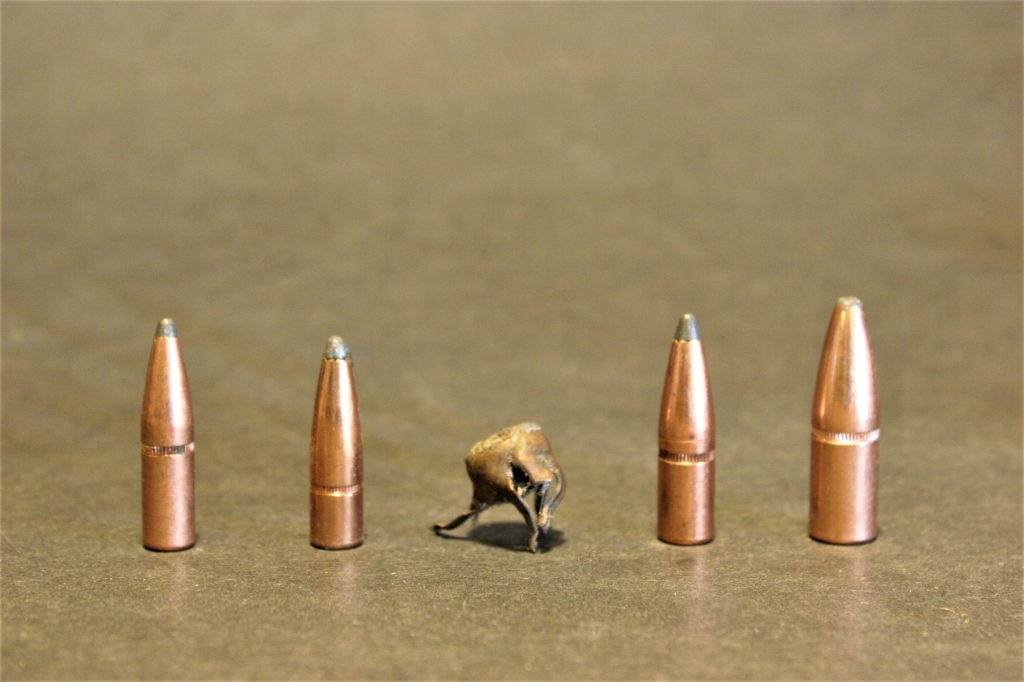
Eventually the tips of some soft-nosed spitzers were capped with harder metal, primarily to prevent flattening the lead during recoil, due to impacting the front of a box magazine. While this prevented tip deformation, it could also enhance expansion a little too much, partly because the tips had to be enlarged to attach the cap. John Taylor often mentioned his dislike of “copper-capped” bullets in his books on African rifles, due to their erratic expansion, and the Winchester Silvertip, with the tips capped in tin, also acquired a reputation for erratic expansion. This could also happen with bullets featuring a separate, harder tip inserted into the nose, including the old Remington Bronze Point, and early versions of today’s wide variety of plastic-tipped spitzers.
Eventually a number of designers came up with an essentially 2two-part bullet, with a softer front end that expanded easily, and a tougher rear end that held together. The German company RWS started producing its H-Mantle bullet in 1934, which has a softer lead-alloy “nose” core and harder-alloy rear core, with a fold in the jacket at the front end of the rear core. The front end expanded easily, tending to kill smaller game quickly, while the flat-fronted rear end continued to penetrate on larger game. (Today RWS also offers a capped-tip version named the Rapid-X-Tip, which expands more violently and tends to kill smaller game quicker—important in much European hunting, to prevent animals from running onto the next estate before falling, thus becoming the property of the other landowner.)
Shortly after World War II an American named John Nosler developed a somewhat similar bullet; he was inspired to do so after a Remington Core-Lokt from his .300 H&H Magnum came apart on a bull moose’s shoulder. He developed a two-core bullet, using a jacket with a solid wall of gilding metal between the front and rear cores. Like H-Mantles, the softer front core tended to disintegrate, while the rear of the bullet continued to penetrate. His first, basically handmade, bullets weren’t very accurate, but they only had to shoot “minute of moose,” and penetrated very well on his next bull. He started selling Nosler Partition bullets to handloaders in 1947, but they didn’t appear in factory ammunition until the early 1960s, when Weatherby started loading them.
The next big step occurred in the 1970s, when an Idaho elk hunter named Bill Steigers developed a method of soldering lead cores inside heavy copper jackets. His Bitterroot Bonded Cores retained more weight than H-Mantles and Partitions, but didn’t typically penetrate any deeper, due to opening into a wide “mushroom.” This wide front, however, created a wider wound channel.
Because of limited production, BBC bullets were mostly sold locally, but they led to other bonded bullets, including the partition-jacketed Swift A-Frame, which has a bonded front core. Another early bonded bullet was Jack Carter’s Trophy Bonded Bear Claw, with a rear shank made of solid copper and a relatively small bonded front core. Both also mushroomed widely, a tendency of most bonded bullets.
In the 1980s, a Utah hunter named Randy Brooks took the solid-shank concept a step farther, developing an all-copper hollow-point he named the X-Bullet, which penetrated very deeply, due to the front end opening like a flower into four “petals.” This resulted in less frontal area than bonded bullets, with the rotating petals creating a narrower but still very effective wound channel. Barnes’ bullet went through several changes over the years, to reduce copper-fouling in bores, increase accuracy and to ensure expansion. The last occurred in 2007, with the addition of a plastic tip, which definitely aided expansion in smaller calibers.
Today many bullet companies make monolithic hunting bullets. This isn’t only because of their deep penetration, but because some jurisdictions—ranging from public hunting areas to entire countries—have banned lead in bullets, due its potential toxicity.
The latest trend in expanding bullets is, of course, higher ballistic coefficients, which result in more retained energy and less wind-drift at longer ranges—one area where lead-core bullets have an advantage over monolithics, due to being shorter in the same weight and diameter, and thus more easily stabilized in more-or-less standard rifling twists. Of course, rifling twists continue to tighten as more hunters start using high-BC bullets.
Some of the same construction advances eventually appeared in so-called solid, non-expanding bullets used on the largest big game, especially elephants. Some became actual solids, made entirely of brass, with wide, flat noses which tend to do more soft-tissue damage than the round noses of many older lead-core “solids,” and also penetrate straighter. Some of these solids even have slightly cupped noses, which increase tissue damage. Both North Fork Technology’s Cup-Point and Australian bullet maker Woodleigh’s Hydrostatically Stabilised Cup-Point have a slightly smaller-than-bullet-diameter cupped nose to allow them to feed from typical bolt-action magazines. Swift’s Break-Away Solid is a lead-core with a round polymer tip, which feeds very smoothly and breaks away upon impact, leaving a cup-tip.
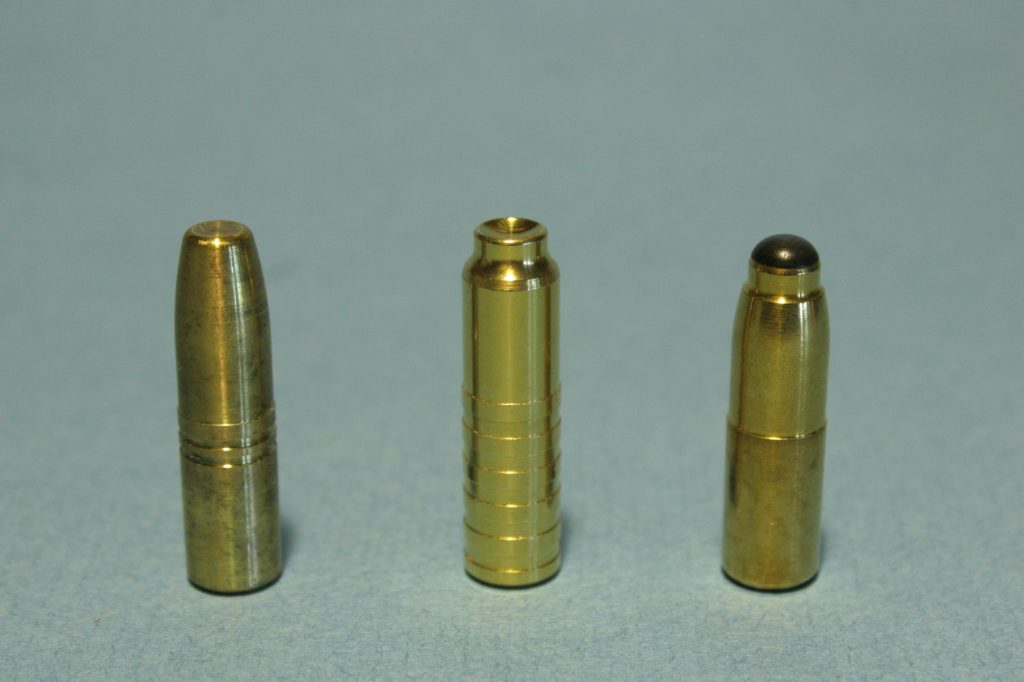
What’s in store for future hunting bullets? The specifics are hard to predict, but the overall trends since the first spiral rifling appeared have been toward smaller calibers, lighter weight, higher velocity, increasingly controlled expansion, and less use of lead.

